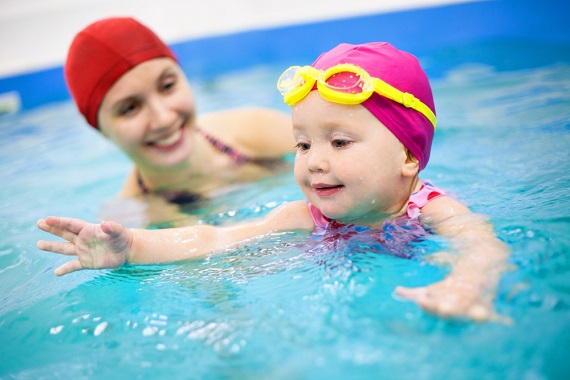Do you have kids? Or grand-kids? Or nieces and nephews? If so, this post is for you – it has valuable information about keeping those beloved kids safe in and around water. And even if you don’t have kids yourself but you simply frequent pools and beaches in the summer, we encourage you to take note, too. We offer useful tips to keep kids safe from people who know.
First, we point to a popular prior blog post that contains useful information that many people didn’t know: ” We are conditioned by movies and pop culture to think that a drowning person would yell and wave for help and splash violently to get attention. In reality, drowning is a quiet, desperate event – so quiet that every year, children die in pools and water just feet away from parents or friends who do not recognize the signs of distress.”
Drowning doesn’t look like what we see in the movies
We’ve also recently come across a few useful articles featuring Moms who offer great advice about protecting kids from downing. One mother, sadly, gained her expertise the hard way after the drowning death of her toddler. The other Mom gained her expertise in her job investigating drowning deaths as her job.
In A Layered Approach to Preventing Drowning, Nicole Hughes shares her sad experience and the lessons she learned from her 3-year old son Levi’s drowning death:
“Our son drowned when there were six physicians in the room, 12 adults, 17 kids,” said his mother, Nicole Hughes, a writing teacher and literacy coach in Bristol, Tenn., who now works extensively in drowning prevention, including with the American Academy of Pediatrics.
“Everything I read about drowning before Levi died, it was like background noise,” Ms. Hughes said. “We think it’s happening to neglectful parents” who don’t watch their children when they’re swimming. But as she learned after Levi’s death, for most toddlers who drown, it doesn’t happen in the context of time spent “swimming” — that is, time they’re known to be in the water. And drowning is the leading cause of preventable deaths in children from 1 to 4.”
In addition to offering great advice for parents to raise awareness, the article also points to a helpful Drowning Prevention Toolkit from American Academy of Pediatrics.
The second article offers water safety tips for parents from Natalie Livingston, a Mom who investigates drownings in her role as vice president of Oostman Aquatic Safety Consulting. She knows what she is talking about – she “spent 25 years as a lifeguard and worked as the general manager of a water park for 10 years. She trains lifeguards, consults in both private and public operations, and is hired as an expert witness in drowning cases.”
Livingston lists 10 in-depth, practical tips with advice that you might not think about, tips that she applies to her own children. For example, would you think to teach your child how to escape the grip of a struggling, panicked person? Or raise awareness about water depth in practical terms they can understand? Those are among the many lessons she offers. You can also follow Livingston on Facebook at Aquatic Safety Connection for more tips. Her tips have gone viral online, and she was recently featured on Good Morning America. Take the time to check them out!
In addition to Livingston’s tips, the article offers these additional water safety recommendations:
- Swim Lessons Save Lives
- Learn CPR — Drowning patients need oxygen — give air first!
- USCG approved lifejackets only — no arm floaties or inflatables
- Designate A Water Watcher / Swim with a Lifeguard
- Always use pool barriers and layers of protection
- Enter the water feet first
- No running
- Stay hydrated / protect yourself from the sun
- No drugs / alcohol
- All water is dangerous — even inches
- Always swim with a buddy
- Lost / Missing kids — always check the water first
See related posts on pool safety:
Swimming pool and spa safety issues and insurance coverage
Pool & spa owners: Minimize your risk with simple steps for safety
Reprinted from Renaissance Alliance – no usage without permission.



